Best monoculars in 2025 — lighter, smaller and cheaper than binoculars
The best monoculars are best for portable stargazing and they make great stocking stuffers for the festive season.
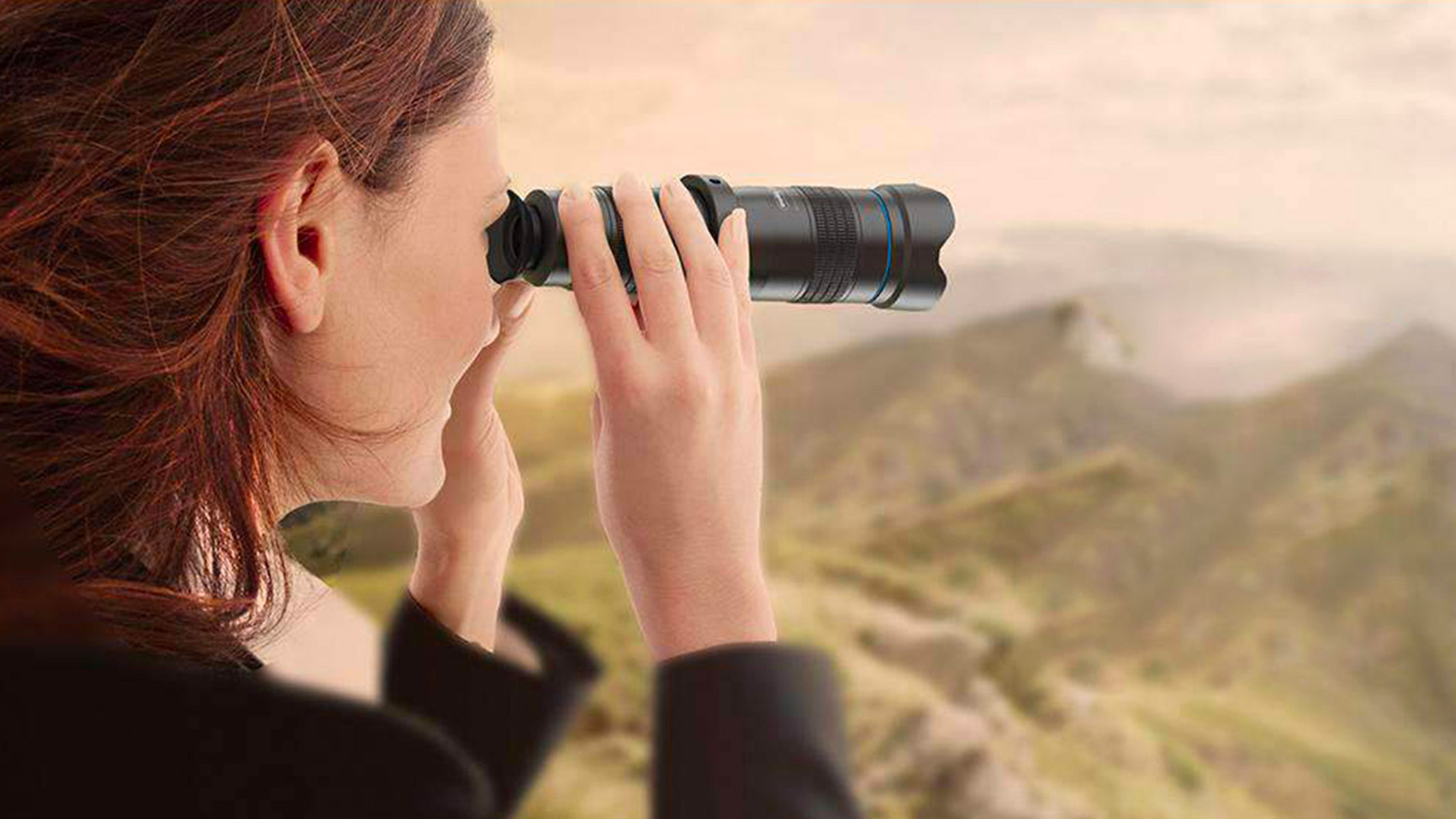
- Best super lightweight model
- Best for ruggedness
- Best premium monocular
- Best for color fidelity
- Best for wildlife
- Best for magnification
- Best for night vision
- Best for use with a smartphone
- Best for photos and videos
- Best for unsteady hands
- Best for portability
- Best monocular FAQ
- Update log
- How we test
Whether you are a serious stargazer or a budding amateur, you shouldn’t underestimate the power and flexibility of a monocular. The best monoculars can have advantages over binoculars and telescopes, not least their portability. Just slip a monocular into your pocket and you can observe the skies on the go. If you want some ideas for observation, our night sky guide has a detailed look at the entire month in skywatching, with moon phases, stars and the best planets to observe.
The holiday season can be a good time to make a purchase, either as a gift or just to get something you have wanted, whilst taking advantage of festive savings. If you want one before the big day, it is better to research and purchase one now to avoid disappointment on the big day.
Best monocular we recommend in 2025
Why you can trust Space.com
Best super lightweight model
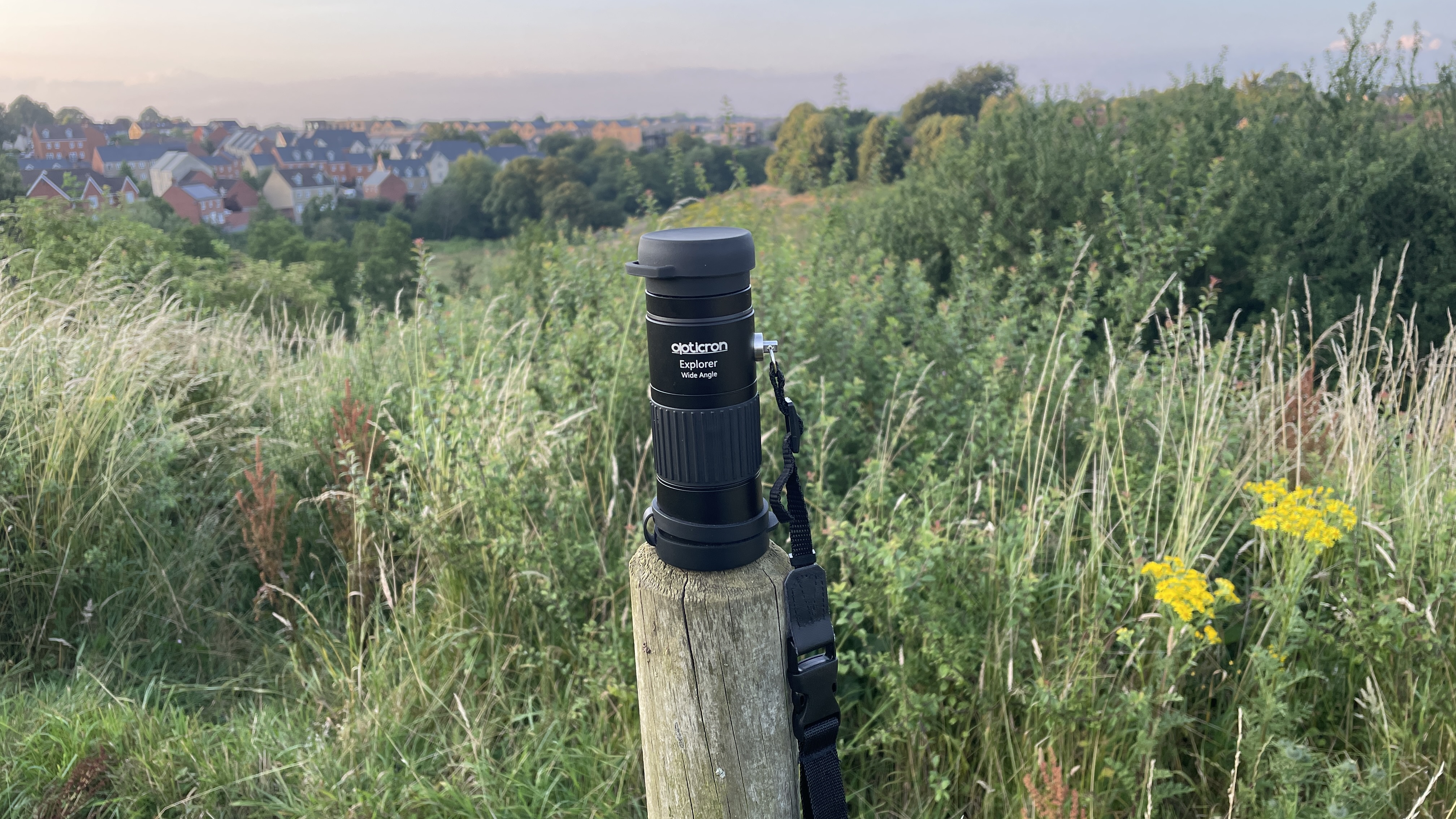
Specifications
Reasons to buy
Reasons to avoid
✅ You want a great all-rounder: It's affordable, compact and lightweight, can withstand tough conditions and has excellent ED optics.
❌ You want high magnification: For zooming in on fine details, you'll want an instrument that has a higher magnification, like the 10x variant of this model.
🔎 Opticron Explorer WA ED-R 8x42 A great all-rounder that boasts fantastic quality optics in a compact package at an affordable price. It's comfortable and easy to use, perfect for wide-field observations. ★★★★
For stargazing novices, the Opticron Explorer WA ED-2 8x42 is a fantastic monocular. It can capture a lot of light from distant stars thanks to its 42mm objective lens, and the 8x magnification is perfect for reducing wobbles and improving focus on objects.
This monocular is very portable, waterproof to three meters and nitrogen-filled to minimize the fogging that appears when moving between warm and cold conditions. As such, we think it's ideal for a whole host of outdoor activities.
Its generous 17mm of eye relief makes it comfortable to use, ideal for those who wear glasses. It also comes with a soft neoprene travel case with a cushioned strap, rain protection and rubber lens covers to prevent scratches on the glass.
Don't let its price point fool you: we were seriously seriously impressed with the optics in the Opticron Explorer WA ED-2 8x42. It has extra-low dispersion (ED) glass which results in better color rendition and a reduction in chromatic aberration, and the optics are multi-coated, leading to better clarity and contrast.
Overall, we can't complain much at all about the Opticron: It's a premium product for a budget price. What's more, it comes with a limited lifetime warranty, giving you extra peace of mind if anything does go wrong.
- Read our full Opticron Explorer WA ED-2 8x42 review
- Check out the Best camera backpacks here
Attributes | Notes |
|---|---|
Design | Compact, lightweight and easily pocketable. |
Performance | Top quality optics, durable |
Functionality | 17mm eye relief. |
Best for ruggedness
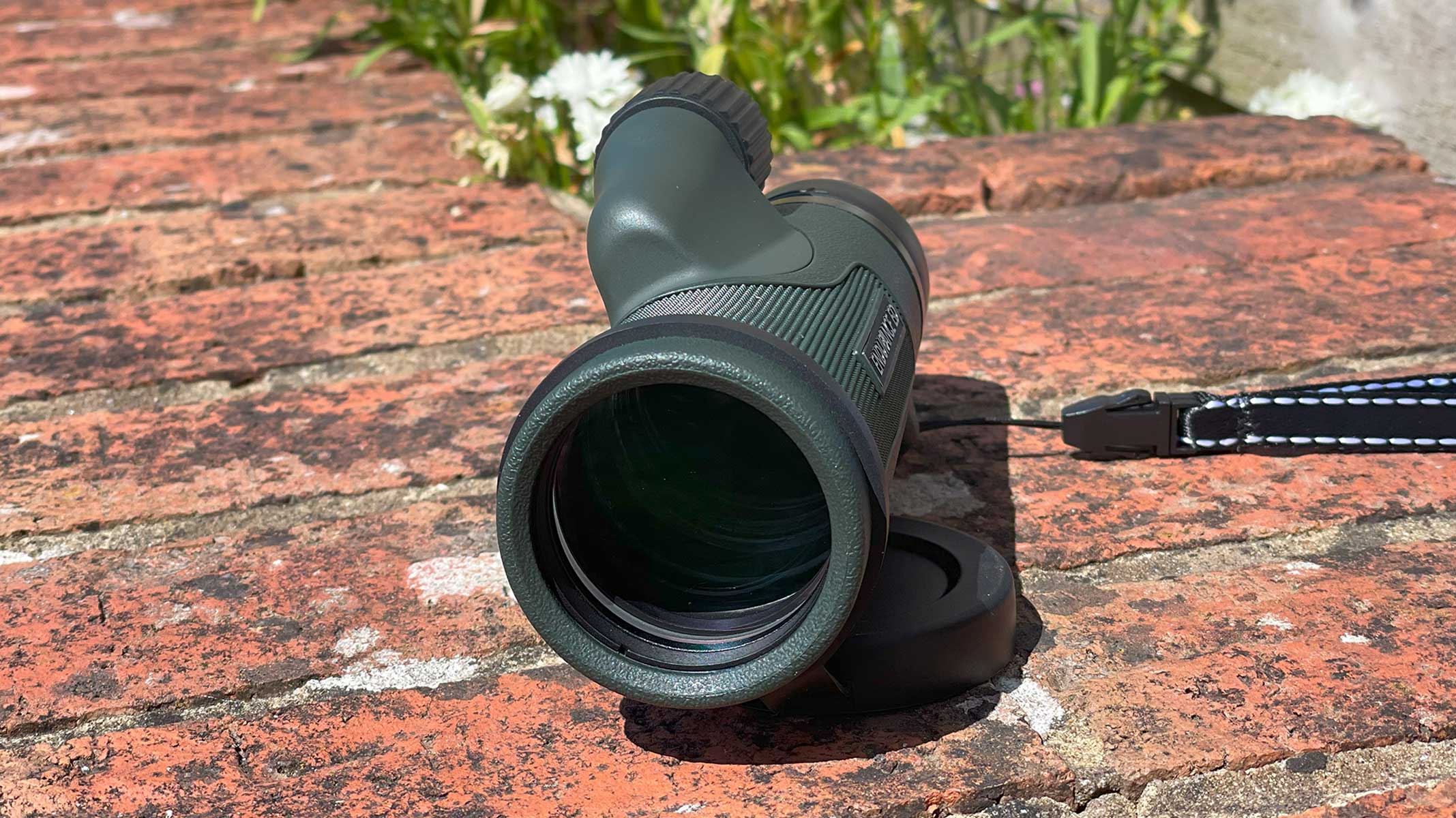
Specifications
Reasons to buy
Reasons to avoid
✅ You want to travel with it: It's lightweight and portable (although not small enough to fit into a pocket), making it a great option for observing wildlife or the night sky when out and about.
❌ You wear glasses: The eye relief is only 13mm, so if you wear glasses we'd recommend looking elsewhere.
🔎 Hawke Endurance ED 10x42 monocular Fantastic quality glass in a small and lightweight package, perfect for on-the-go observations. It's designed to withstand various weather conditions and comes with quality accessories. ★★★★
If you're a frequent traveler, you'll appreciate the Hawke Endurance ED 10x42 monocular's tough and durable design. You don't have to worry about the odd knock or scrape as you're moving around and throwing it in backpacks or pockets.
But this monocular device is not just tough-shelled: It's a great performer, too. It has special phase-corrected BaK-4 roof prisms and with fully multi-coated lenses and extra-low dispersion (ED) glass. These features give you beautifully sharp, bright optics with minimal color distortion.
With its waterproof optics, you can use this monocular worry-free even in rough weather. It's also nitrogen-purged to prevent fogging. And with its rubber casing, lens covers and lanyard, you're less likely to accidentally drop or misplace it.
From the 350 reviews on Amazon, we gathered users like the portability, value and ease of use of this monocular, scoring it 4.5 out of 5 stars. The main drawback is that the eye relief is only 13mm, so it wouldn't be a good choice if you wear glasses; anyone else is likely to enjoy the convenient twist-up eyecup.
- Read our full Hawke Endurance ED 10x42 review
Attributes | Notes |
|---|---|
Design | Lightweight, but too large for a pocket. |
Performance | Excellent optics. |
Functionality | Astro-centric specifications. |
Best premium monocular
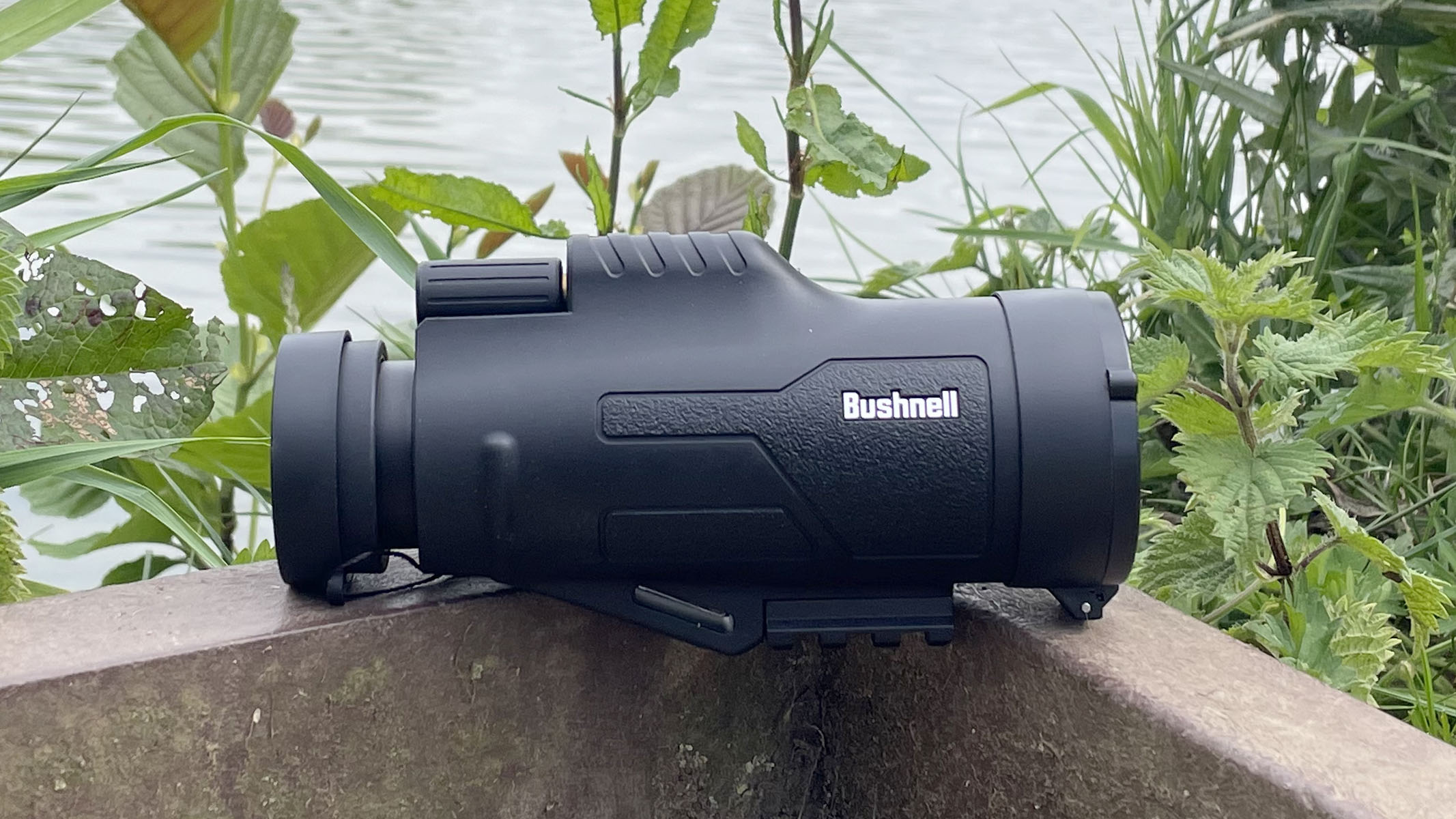
Specifications
Reasons to buy
Reasons to avoid
✅ You wear glasses: This model features twist-up eyecups which provide excellent eye relief if you wear glasses.
❌ You're on a budget: This is one of the more expensive products on our list, but you're getting excellent quality for that price.
🔎 Bushnell Legend Ultra 10x42 monocular Known for its impressive build quality, outstanding optics and valuable extras, it sets itself apart from the competition. ★★★★
Bushnell is a well-known optical equipment brand, and it has created a very high-quality monocular with the Bushnell Legend Ultra 10x42. It has a black magnesium body with easy-to-grip sides and a sturdy built-in belt clip, so you can keep it at hand while on the go.
Weighing in at just 13.2 oz (374g), this monocular is lightweight and compact, and includes a 1/4-20 tripod adapter if you want to mount it for extended viewing. Bushnell also includes a flip-style lens cap for both the front and rear lenses, which attaches to a lanyard to prevent it getting lost.
As you'd expect from a high-end product from a brand with such a strong legacy behind it, everything has been very well thought-out on this monocular. In our Bushnell Legend Ultra 10x42 Ultra HD monocular review, we found the focus knob extremely smooth to use, been placed exactly where your index finger naturally rests when holding the device, which makes one-handed operation a breeze.
Thanks to the Rainguard HD Hydrophobic Coating used on the lenses, this monocular is also fully waterproof, so you don't need to worry if you get caught in a rain shower or if you're near a waterfall: Water simply balls up and slips off the lenses.
The optics on offer here are similarly impressive. It uses ED Prime fluorite glass and BaK-4 roof prisms to deliver clear and detailed views, and the optics are fully multi-coated and anti-reflective to ensure accurate color rendition and eliminate chromatic aberration. With a close focus of 6.6 ft (2.01m), you'll be able to zoom in on wildlife even in your backyard. While this is one of the priciest options on our list, we think the quality is worth every penny.
- Read our full Bushnell Legend Ultra 10x42 Ultra HD monocular review
Attributes | Notes |
|---|---|
Design | Superb build quality. |
Performance | Excellent optics. |
Functionality | Good eye relief, remarkably lightweight given the optics. |
Best for color fidelity
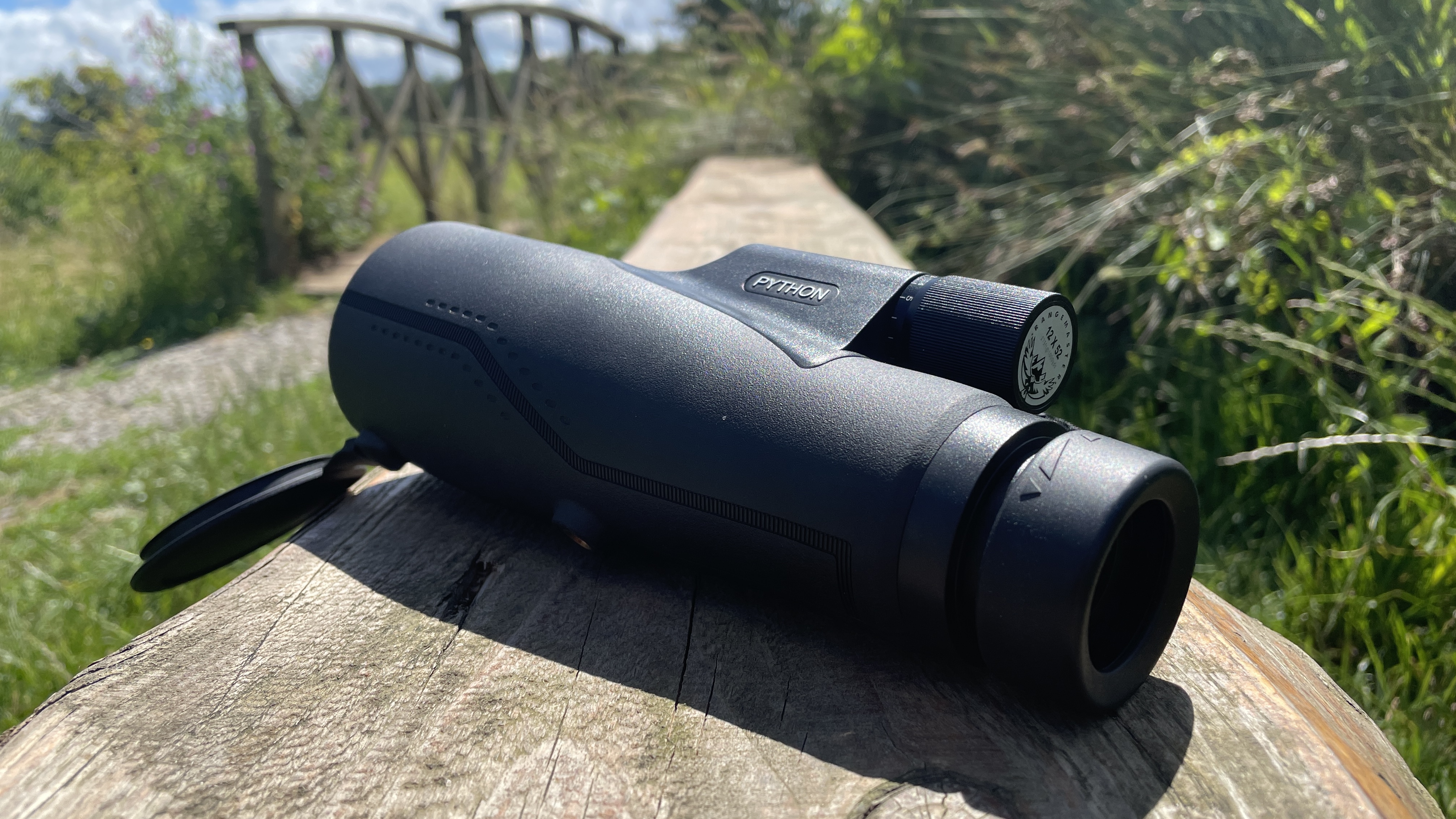
Specifications
Reasons to buy
Reasons to avoid
✅ You want superb optics: Thanks to the impressive glass treatments and high light transfer, this monocular delivers edge-to-edge sharpness and beautiful, accurate colors.
✅ You want a waterproof monocular: This one is IPX7 rated and also fog proof.
❌ You want a handheld monocular only: The 12x magnification requires a tripod for longer viewing sessions.
🔎 The Python Rangemaster 12x52 monocular is made of high-quality German Schott glass and has fully multi-coated lenses, guaranteeing beautiful optics thanks to its high light transfer. ★★★★
Everything about the Python Rangemaster 12x52 monocular screams high quality, from its nitrogen-purged magnesium chassis to the Alpha-level German Schott glass lenses. But what really sets it apart from the competition is the extensive list of glass treatments it has undergone to provide fully multi-coated lenses.
These treatments applied to the large 52mm objective lens mean the Rangemaster 12x52 packs a performance punch. It has a light transfer of 91%, guaranteeing sharp views, with excellent edge-to-edge sharpness and high color fidelity. During our Python Rangemaster 12x52 monocular review, we found it a great companion for birdwatching, rendering the colors of bird plumage very accurately, which meant we were able to differentiate between similar-colored birds very easily. The 12x magnification also enabled us to observe intimate detail of nesting geese from a considerable distance.
But the 52mm objective lens also lets plenty of light in, ensuring great low-light performance. In our review, we likened this monocular to a small telescope, as we managed to make out fainter night sky objects such as Andromeda (M31) in subpar viewing conditions. It's worth noting though that in order to achieve this, we had to use a tripod, as the 12x magnification requires stabilization after a short amount of viewing.
As mentioned above, this monocular has a rugged design with a tough magnesium chassis. It's waterproof to IPX7 and fog-proof, so you can take it out in harsh conditions without fearing for it. We did find the rubber armor was lifting off from the chassis slightly during our testing, but there are no reports of this online, which means it might have been an issue with our testing unit.
One downside of the Rangemaster is the phone adapter is very awkward to set up, so much so that we found ourselves avoiding using it. So if you're looking for a monocular to use with a smartphone, this might not be the one for you. Otherwise, if you have the budget for it, we'd whole-heartedly recommend this monocular to bird- and sky-watchers alike.
- Read our full Python Rangemaster 12x52 monocular review
Attributes | Notes |
|---|---|
Design | Rugged chassis, IPX7 water- and fog-proof. |
Performance | Superb optics, accurate colors, high magnification. |
Functionality | On the heavier side, requires a tripod at 12x magnification. |
Best for wildlife
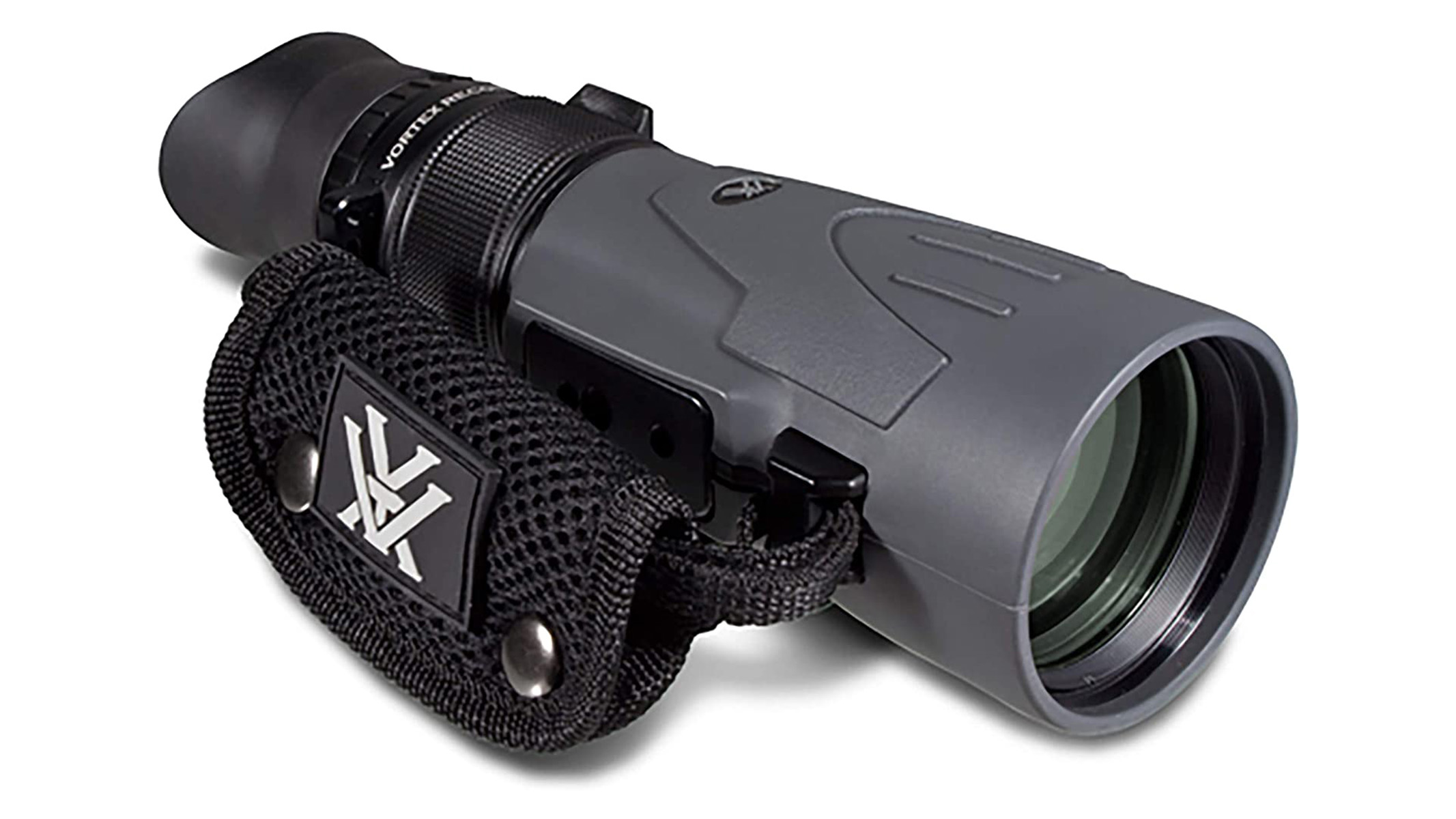
Vortex Recon R/T 15x50 monocular
Our expert review:
Specifications
Reasons to buy
Reasons to avoid
✅ You're a keen wildlife-watcher: If you have an invested interest in wildlife spotting and have the budget to put into a good monocular, this would be a fantastic option.
❌ You want something inexpensive: This model is definitely on the more expensive side, so if you're only a casual user then you'll want to look for a more budget-friendly monocular.
🔎 Vortex Recon R/T 15x50 monocular Though quite expensive, it provides an impressive 15x magnification, allowing you to see objects much closer than regular astronomy binoculars or monoculars. With its multi-coated extra-low dispersion glass, you can expect detailed and high-resolution images from long distances. ★★★★
The Vortex Recon R/T 15x50 monocular was originally designed for field surveillance and range estimation, but its powerful magnification makes it great for observing nature and the sky.
The best thing about this monocular is its optics. With 15x magnification, it brings objects much closer than regular binoculars. The multi-coated lenses and extra-low dispersion glass provide very clear images, making it perfect for detailed views of the moon, or for wildlife spotting.
Having such a high magnification is quite unusual on a monocular, but it does come with a couple of drawbacks. Naturally, you'll need to have a very steady hand (or utilize a mount), otherwise you'll be looking at nothing but a shaky image. Thankfully, there's a screw thread so you can easily use a tripod if you need to. On top of this, we've found the image not quite as bright as some monocular devices with a lower magnification.
The Vortex Recon R/T 15x50 has a rugged build and a waterproof design, perfect for taking it outdoors on wildlife observation trips. It's got rubber armor on the outside for a good grip and comes with a rain/dust hood to protect the lens.
- Want to see more? Here are the Best telescopes for seeing planets
Attributes | Notes |
|---|---|
Design | Small exit pupil. |
Performance | Not good in darkness. |
Functionality | 15x magnification. |
Best for magnification
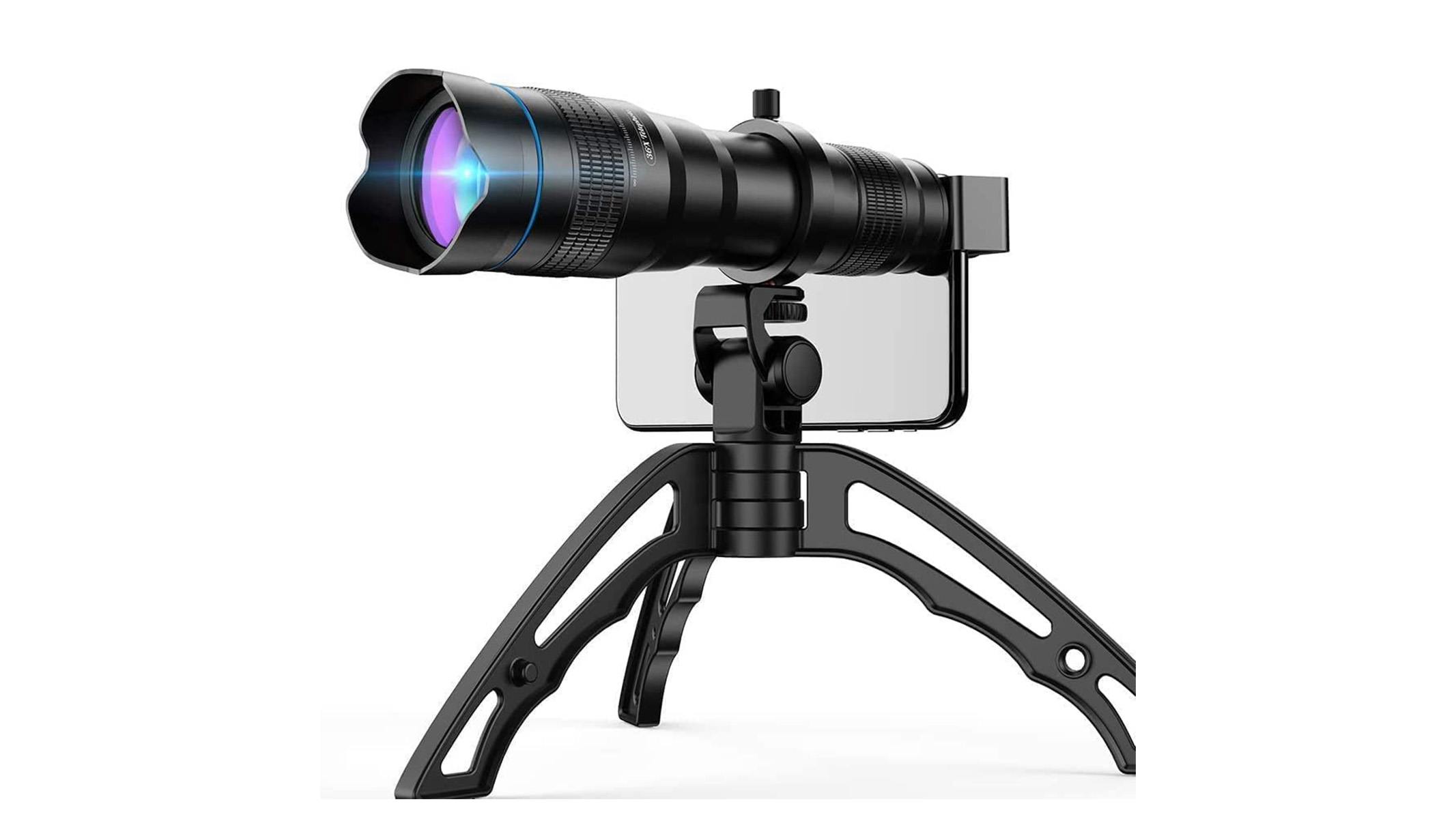
Apexel 36x super zoom monocular/smartphone lens
Our expert review:
Specifications
Reasons to buy
Reasons to avoid
✅ You're a content creator: This monocular is designed to attach to a smartphone.
❌ You want flexibility: This monocular has a fixed zoom, so it wouldn't be ideal for viewing moving objects where you may need to zoom in or out.
🔎 Apexel 36x super zoom monocular/smartphone lens Think of it as a small telescope with a fixed zoom of 36x. Using a clip-on lens with superior optics such as this monocular is a far superior option compared to digital zoom. ★★★½
The Apexel 36x super zoom is a multi-purpose lens that can be used as both a monocular and a telephoto lens for your smartphone camera, offering the potential for basic astrophotography. It's also one of the most affordable options on our list.
We were impressed by the optics of the Apexel 36x super zoom. It features BaK-4 glass, roof prisms, and multi-coated lenses that minimize ghosting, reflections and lens flare. However, it's worth noting that the fixed 36x magnification, while good for capturing images of the moon, won't completely fill the field of view, covering about 5.3 degrees.
The Apexel is a great solution to the limitations of smartphone cameras, which often suffer from degraded image quality when using the digital zoom. This compact telescope attachment easily clips onto your smartphone lens, enabling you to capture high-quality photos and videos of distant objects. This proves endlessly useful for content creators, wildlife enthusiasts and anyone interested in shooting sports, concerts or celestial bodies like the moon.
The Apexel comes bundled with its own mini tripod, but we've found it to be quite unreliable and not sturdy enough to withhold the lens and our smartphone. You'll be better off using your own tripod, which will lead to extra expenses. There isn't a built-in tripod thread on this monocular, but it does have a metal adapter ring. It also comes with the rubber eyepiece that allows it to be used as a monocular, but it's rather small, so people who wear glasses might find it difficult to use.
It's more of a novelty item than a serious bit of scientific kit, but the Apexel is rather nifty and versatile — if you like taking photos with your smartphone, it's probably worth your consideration.
- Pairing this with a smartphone? Check out our guide to the Best camera phones
Attributes | Notes |
|---|---|
Design | Clips onto a smartphone. |
Performance | Easy to use. |
Functionality | Fixed zoom. |
Best for night vision
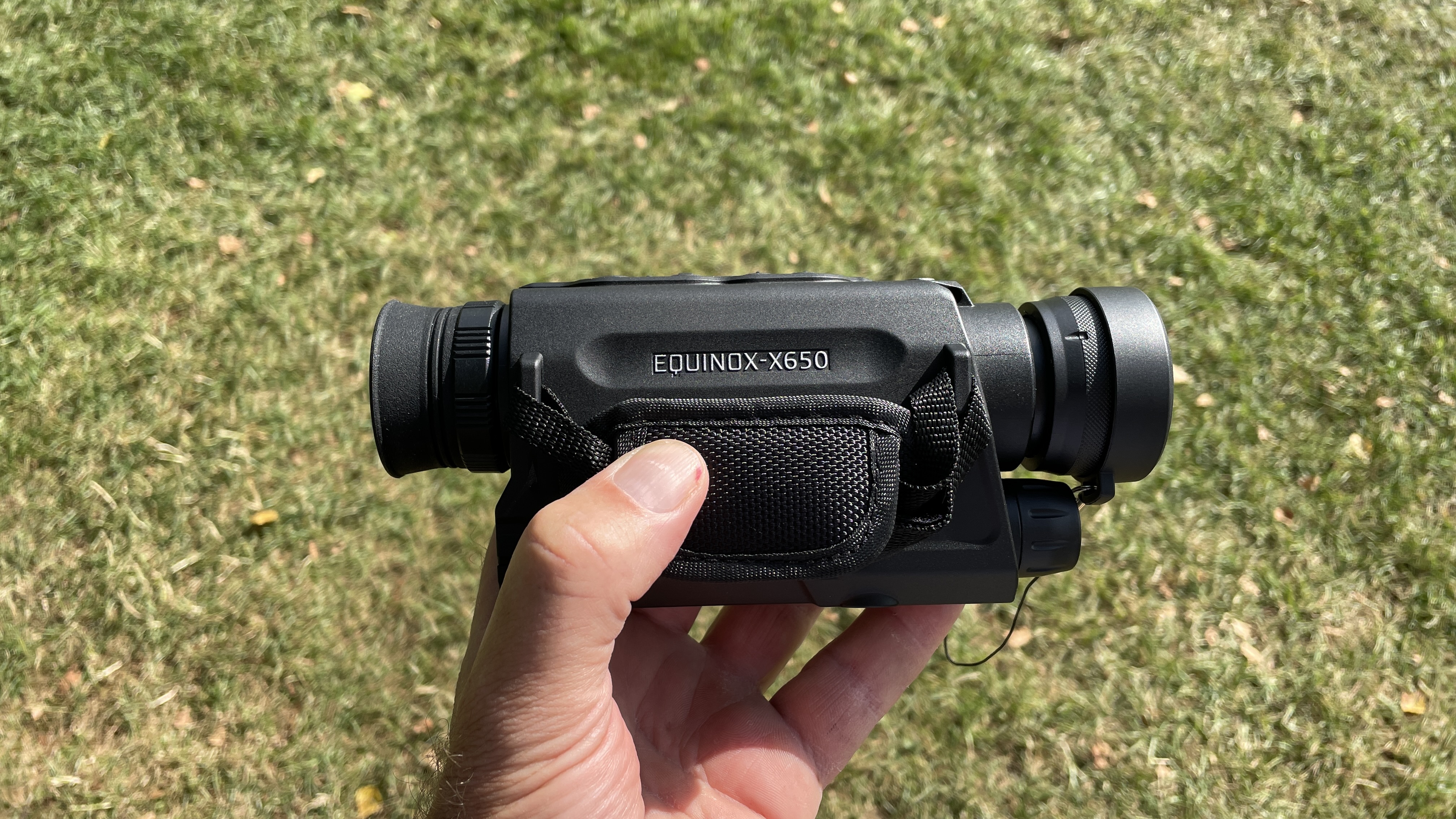
Specifications
Reasons to buy
Reasons to avoid
✅ You want to film what you see: This monocular has video recording capabilities and comes with a micro SD card.
❌ You want a durable, rugged monocular: The plastic build on this one and the fact it includes batteries make it more fragile than competitors.
🔎 The Bushnell Equinox X650 monocular is a bit of a novelty item which has night vision and lets you record what you see. It doesn't have the most solid build or the best zoom, but if you want to create video content, it's a great option to consider.
Our expert reviewers are currently testing the Bushnell Equinox X650, putting it through its paces to assess how it fares. Bushnell is a well-known optical equipment brand, so we're excited to see whether this piece of kit lives up to the hype.
This monocular is meant to grant you a night vision range of up to 650ft thanks to its built-in infrared light, which would be impressive if true (stay tuned for our test results). It also has video capabilities, giving you the ability to record what you observe, and comes with a Micro SD card to store your footage. While it likely won't yield high quality videos, this is a strong feature for content creators and people wishing to immortalize what they see.
However, the Bushnell Equinox X650 is built from plastic and requires batteries to operate, making it quite flimsy compared to other rugged models in this guide. The finish feels cheap, and the zoom isn't as strong as some of its competitors.
That said, for the price, there's plenty to like here, and the Bushnell Equinox X650 delivers impressive daytime color imaging to provide great optical clarity.
- Read our full Bushnell Equinox X650 review
Attributes | Notes |
|---|---|
Design | Plastic build feels cheap. |
Performance | Not the strongest zoom. |
Functionality | Video recording, built-in IR illuminator. |
Best for use with a smartphone
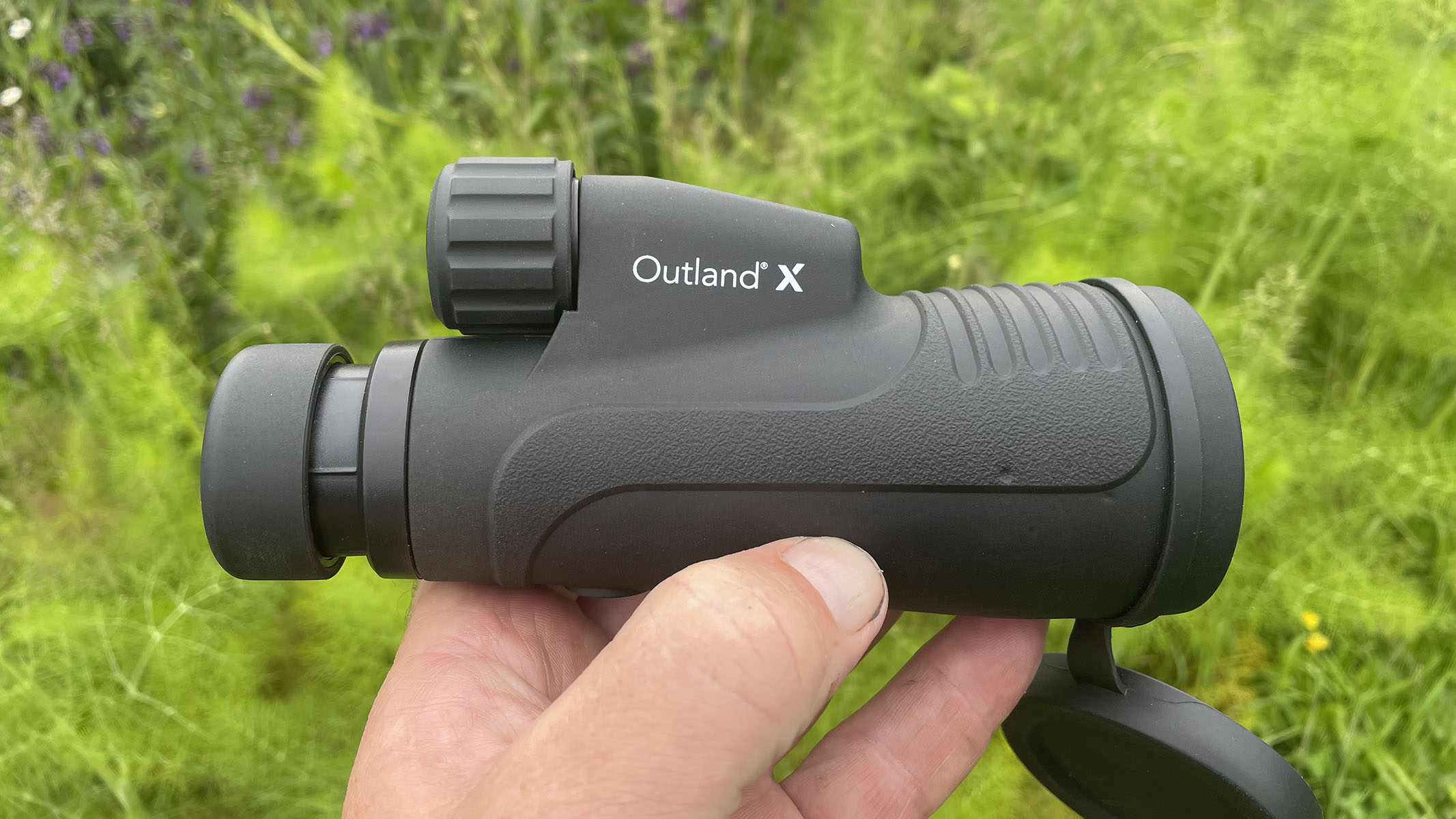
Specifications
Reasons to buy
Reasons to avoid
✅ You shoot with your smartphone: This monocular includes a smartphone attachment.
❌ You want lightweight and portable: It's fairly heavy at 14.6oz / 414g, so there are lighter options out there.
🔎 Celestron Outland X 10x50 monocular This could be considered an ideal digiscoping companion with its astronomy-centric optics. For discovering and studying open star clusters, the moon and the Milky Way, the 50mm objectives with 10x magnification are ideal. ★★★½
The Celestron Outland X 10x50 isn't just a monocular; it can also be used with a camera for digiscoping. This allows you to attach a camera to it and take pictures through its eyepiece, offering an alternative to using a separate zoom lens. Additionally, it comes with a smartphone mount, perfect for digiscoping with your phone.
This particular monocular has a 50mm objective lens and a 10x magnification, which makes it a great choice for observing the night sky. In our Celestron Outland X 10x50 monocular review, we found this level of magnification ideal for studying open star clusters and getting great, detailed views of the moon.
As a Celestron product, a name synonymous with quality sky-watching equipment, it's no real surprise that the optics within the Celestron Outland X 10x50 are of excellent quality. You'll find BaK-4 glass prisms here, and multi-coated optics which deliver beautifully sharp, clear views with minimal reflections.
If you're a glasses wearer, the Celestron Outland X 10x50 should be a good contender for you, too: Its eye relief is a decent 16.8mm, making it comfortable to use for most people.
- Read our full Celestron Outland X 10x50 monocular review
Attributes | Notes |
|---|---|
Design | Relatively heavy. |
Performance | Ideal for digiscoping. |
Functionality | Fog and waterproof. |
Best for taking photos and videos
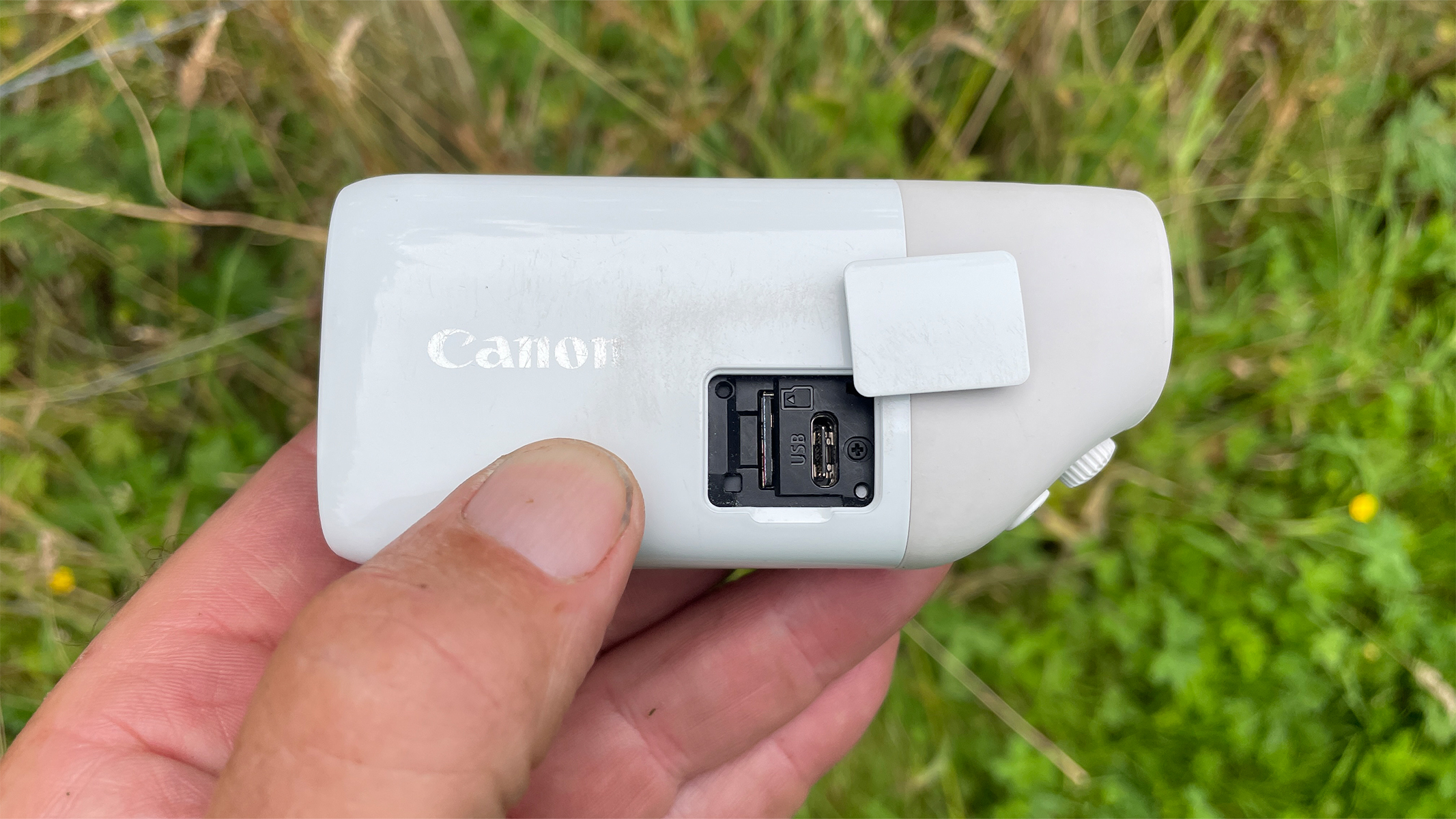
Specifications
Reasons to buy
Reasons to avoid
✅ You like novelty gadgets: The Canon Powershot fills a niche ni the market.
✅ You want something lightweight: At just 5.11oz (145g), this is very compact.
❌ You want something rugged: The plastic casing means this is neither water- or dustproof.
❌ You want to take high resolution stills and video: While this is a great gadget, for quality image capture, we'd recommend opting for a real camera.
🔎 Canon Powershot Zoom digital monocular A nifty, compact gadget that allows you to capture photos and videos of the things you observe and share them in real-time with Bluetooth connectivity. ★★★½
The Canon PowerShot Zoom isn't your standard-issue monocular; we'd go as far as to call it a compact digital camera with a two-position zoom lens. It's pretty unique on the monocular market, and remains surprisingly affordable too.
This gadget uses a CMOS sensor which enables you to take stills at 100mm, 400mm and 800mm focal lengths, ideal if you want to capture sporting events or wildlife snaps.
The 800mm zoom fared very well while birdwatching, and we particularly liked the two autofocus modes that come with the camera function. The image quality is far from outstanding, especially at 800mm, but we found the ability to take snaps during birdwatching sessions handy to identify birds at a later date, for example.
One important thing to note is this monocular is not capable of being used at night. The sensor capacity and the maximum f/5.6 aperture mean it is just not designed for skywatching or capturing images of the night sky; but for daylight wildlife spotting, it works a treat.
Design-wise, it's also a bit flimsy. The plastic casing means it's remarkably lightweight and can fit into any pocket, but it's not water- or dust-proof, which is worth bearing in mind if you want a monocular to take on backpacking trips. We also found the compact design slightly frustrating, in that the buttons are very close together and can easily be pressed accidentally.
Overall, the Canon PowerShot is a fun novelty monocular with plenty of useful features if you want to observe objects in daylight.
- Read our full Canon PowerShot Zoom review
Attributes | Notes |
|---|---|
Design | Plastic case with no waterproofing. |
Performance | 800mm zoom, not useable in low light. |
Functionality | Stills and video capture, Bluetooth connectivity. |
Best for unsteady hands
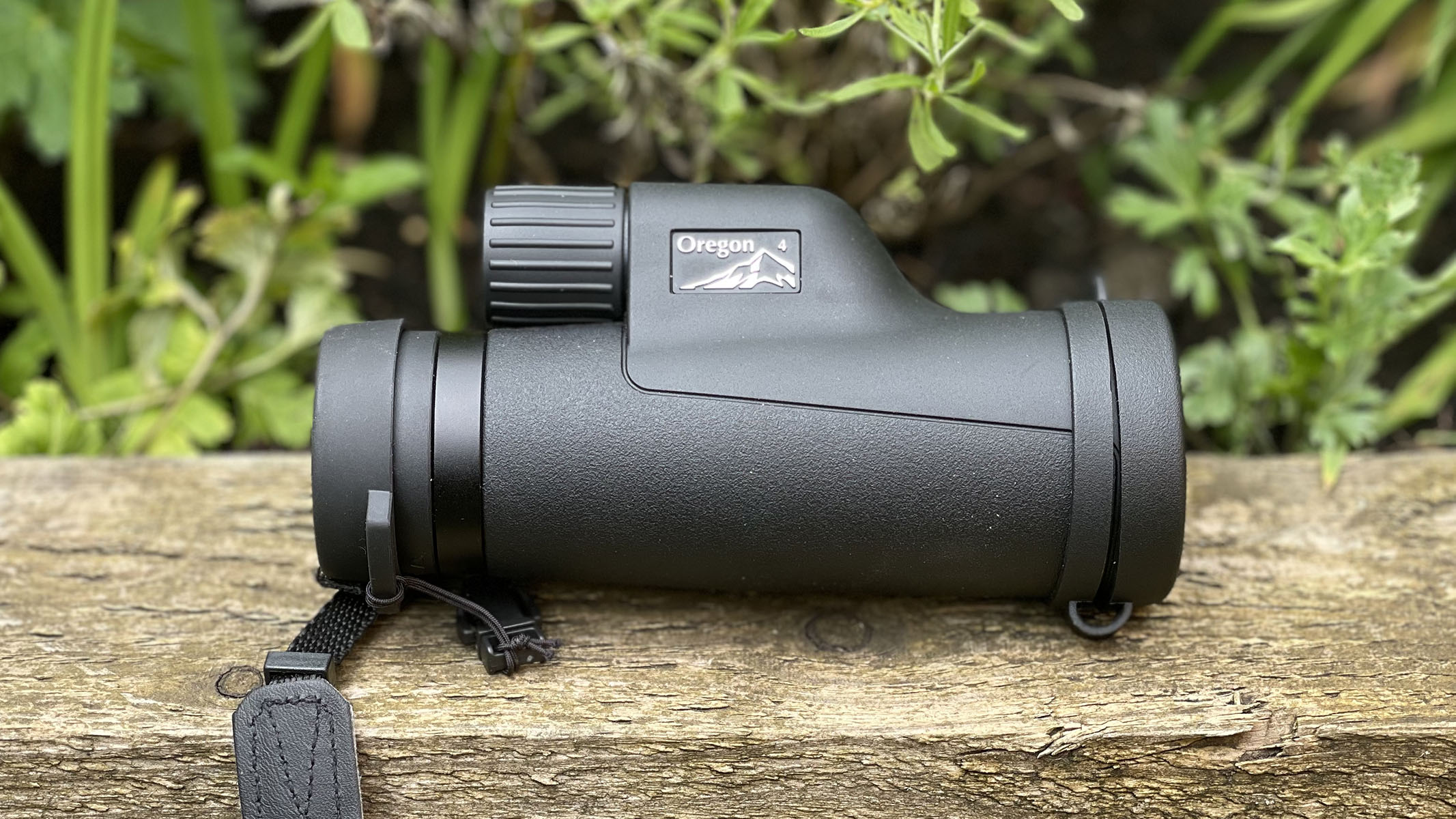
Specifications
Reasons to buy
Reasons to avoid
✅ Simple operation is important: One focusing wheel and lens caps are easy to navigate with one hand.
✅ You want affordable quality: It is priced well for its class and performs great in most situations.
❌ Small details irritate you: The lens cap and monocular straps are both a little on the small side for us.
❌ You need the best: There are better monoculars out there, but they are more costly.
🔎 Opticron Oregon 4 PC Oasis 10X42 Perfect for throwing in your pocket and going for a hike, it is well balanced, providing enough power to use for distant subjects.★★★★
In our Opticron Oregon 4 Oasis 10x42 monocular review our tester noted that this reasonably priced monocular provides good-quality views. Suitable for birdwatching or watching sports, it has sharp optics, is good in low light (we tried it out inside a cathedral) and has a rugged construction, enabling it to cope with most situations.
Even if you've got rather clumsy hands you should find this monocular easy to use: We had no problem operating its external focusing wheel even while wearing thick gloves.
While a 10x magnification can often be subject to wobble, we've found that the Opticron Oregon 4 Oasis 10x42 does a fantastic job of reducing shake, and we've had no problem with movement through unsteady hands or vibrations. Just as well, since this monocular can't be mounted to a tripod or monopod.
The Opticron Oregon 4 Oasis 10x42 monocular has BaK-4 glass and phase-corrected prism coatings, which denote an extra level of quality above the more generic BK-7 glass normally featured in devices at this price point, as well as phase-corrected layers applied to all air-to-glass surfaces.
- Read our full Opticron Oregon 4 Oasis 10x42 review
Attributes | Notes |
|---|---|
Design | BaK-4 fully coated optics and roof prism design. |
Performance | Sharp optics thanks to superior glass quality. |
Functionality | Non-slip rubber armor. |
Best for portability
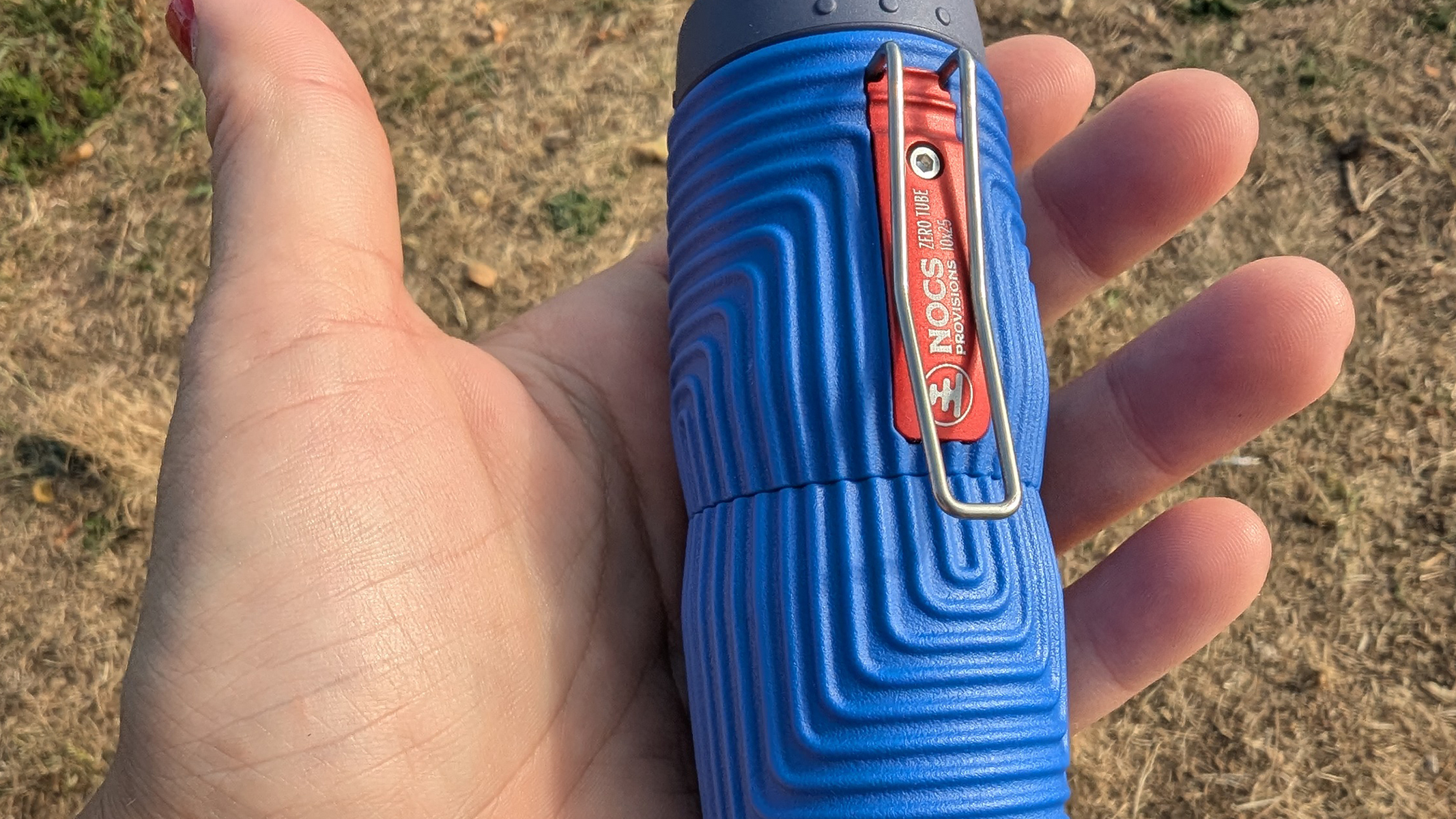
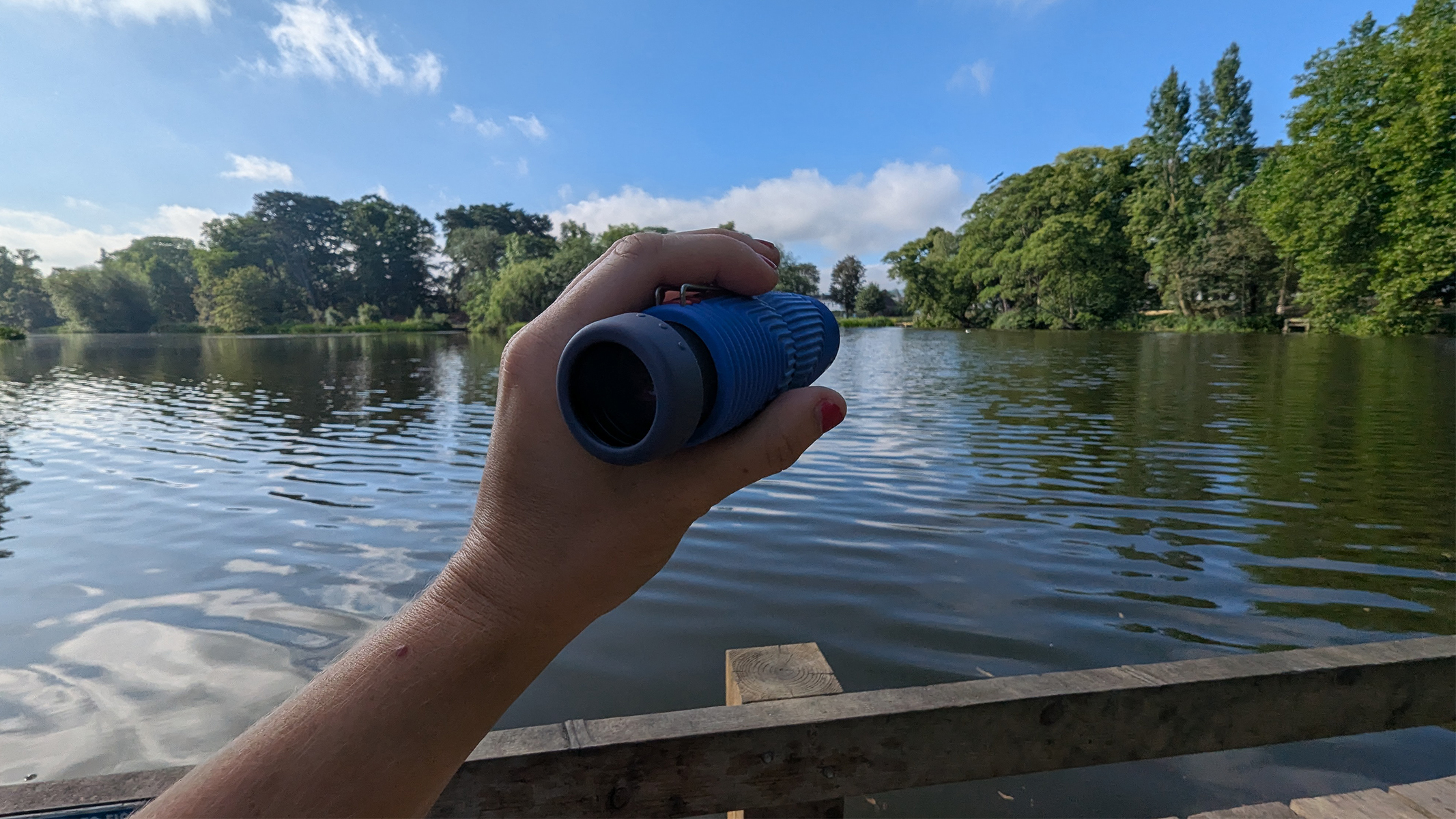

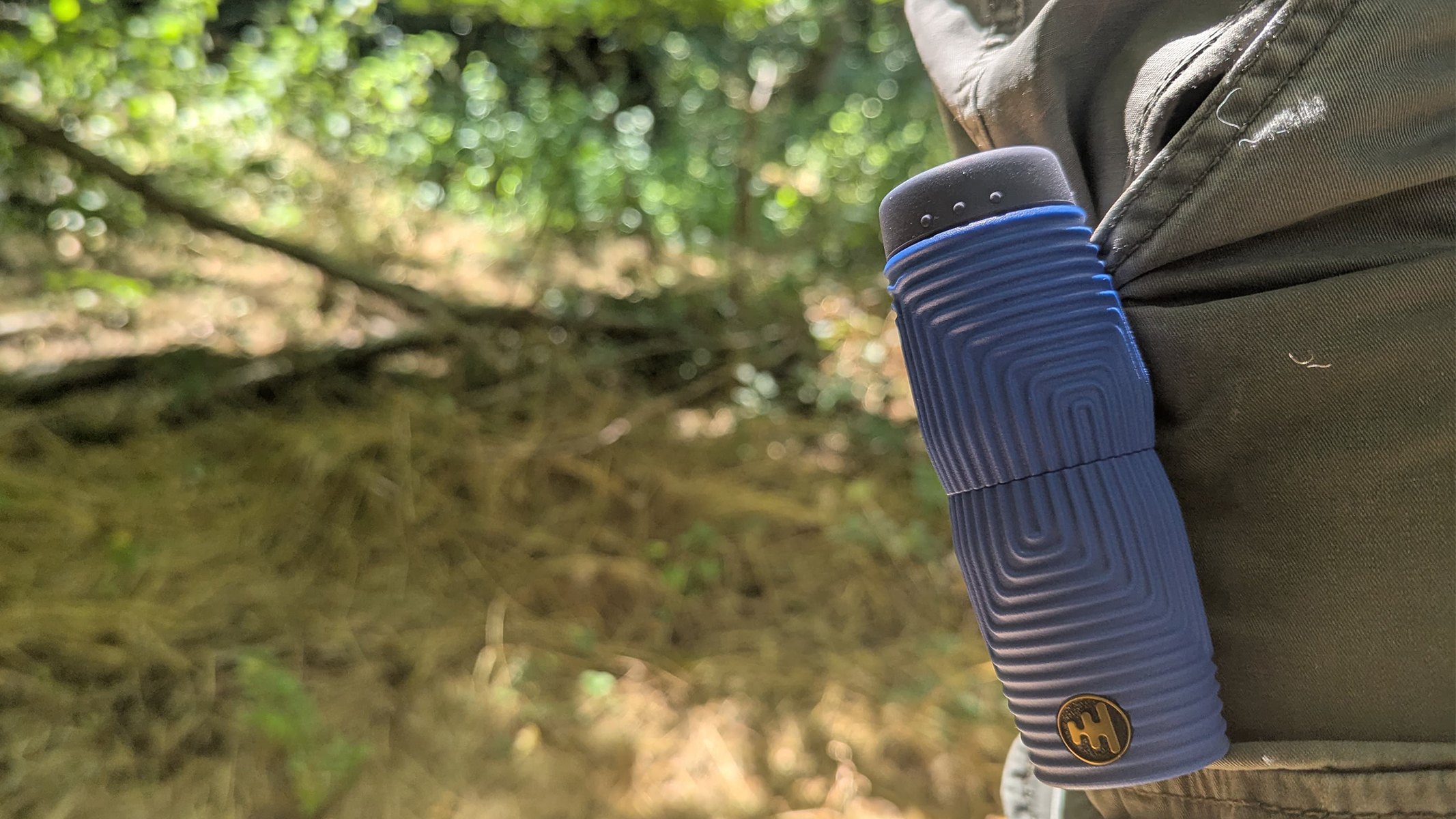
Specifications
Reasons to buy
Reasons to avoid
✅ You want something durable: This monocular is designed for the outdoor enthusiast with rubber housing to absorb impact, IPX7 water and dust rating and superb optics.
✅ You want something versatile: The Nocs Provisions Zero Tube can be used across a range of hobbies due to its impressive optics and portability.
❌ You want to capture photos: Without the add-on adapter, it's hard to capture wobble-free photos, especially as this monocular doesn't have a tripod functionality.
❌ You'd rather be inconspicuous: Coming in bright colors, the Nocs Provisions Zero Tube may not suit everyone's taste.
🔎 Nocs Provisions Zero Tube 10x25 A truly palm-sized monocular that captures sharp and clean images during a range of hobbies ★★★★½
The Nocs Provisions Zero Tube 10x25 is an incredibly portable monocular measuring only 110 mm x 40 mm. In our full Nocs Provisions Zero Tube review, our reviewed noted, it was "barely larger than a pocket flashlight", meaning you can easily carry it in your pocket or bag. Plus, it's so lightweight so you won't even notice you're carrying it. The handy carry clip is also a useful addition, allowing you to clip it onto your pocket when out and about.
Designed with outdoor enthusiasts in mind, this monocular has a ribbed rubber housing which offers excellent grip and helps to absorb impact. Not only this, but it is also rated IPX7 against water and dust. You can immerse this monocular in 3.5 feet of water for up to 30 minutes which means using it out in the rain is no biggy.
The thing we loved most about the Nocs Provisions Zero Tube was how versatile it was. We used it for stargazing, wildlife watching and even at a festival, impressed each time with the quality of the image. The fully multi-coated extra-low dispersion (ED) glass lenses reduce ghosting, lens flare and control chromatic aberration, resulting in sharp and clean images. We also found it hard to fault the color fidelity.
While this is the perfect monocular for portability, it is also comfortable for eyeglasses wearers to use thanks to the 16 mm eye relief. Plus, we particularly enjoyed the close minimum focus distance of 4.9 feet, meaning you can use it to observe wildlife nearby.
Overall, we loved the Nocs Provisions Zero Tube for its versatility and portability.
- Read our full Nocs Provisions Zero Tube 10x25 review
Attributes | Notes |
|---|---|
Design | BaK-4 fully multi-coated optics, ribber rubber housing for grip and a useful carry clip |
Performance | Sharp and clean images when used during a range of hobbies |
Functionality | Great eye relief, IPX7 water and dust rating |

Jamie is a Contributing Writer for Space.com and put together this guide. He is an experienced science, technology and travel journalist and stargazer who writes about exploring the night sky, solar and lunar eclipses, moon-gazing, astro-travel, astronomy and space exploration.
Jamie is the editor of WhenIsTheNextEclipse.com and author of A Stargazing Program For Beginners, and is a senior contributor at Forbes.
Best monocular Frequently Asked Questions
What is the best monocular for stargazing? And why?
Monoculars aren't the first optic to come to mind when deciding on an instrument to stargaze. However, while testing a significant amount recently, we have found that they are a very useful addition to the stargazing kit bag. Their small size and light weight allow them to be taken in a pocket or belt pouches where other larger tools require rucksacks. They do not take any time to set up and can often be used easily with one hand.
We recently tested the Bushnell Legend Ultra monocular. We found it to be
the best overall monocular for stargazing. The 10x magnification and 42mm objective lens make for the perfect compromise between high light gathering ability and enough power to magnify night sky objects with a fair level of detail without causing problems with focusing.
What is the best monocular for birdwatching? And why?
Out of our tests, we found the Python Rangemaster 12x52mm came top of the class.
It's on the heavy side of things at 1.27 lb/20.4oz, but the extra bulk is well worth the extra effort when you see your first bird in the fantastic detail this optic provides. It's a rugged, well-built, quality optic that comes highly recommended.
What is the best monocular for iPhone?
The Bushnell equinox digital monocular. It connects to your smartphone via cable; you can then download images or use the camera live. This is especially exciting when used at night when images can be more clearly seen on the phone screen than the unit's small LCD. It can see in complete darkness, and its infrared sensor is far more sensitive than the human eye. With a filter to protect the CMOS sensor from bright light, the unit can be used around the clock, making it a competent allrounder. We captured images of the moon with this camera and then ran them through Google's photo identifier app, which enabled us to call up lots of information that previously would have meant a manual search.
What is the best monocular for eyeglass wearers?
The most comfortable monocular for eyeglass wearers so far was the Celestron Outland X. This monocular has a generous 16.8mm of eye relief, which allows eyeglass wearers to use the optic for extended periods. It's useful for those who need to wear eyeglasses for everyday activities. The Opricron Oregon 4 PC Oasis is also a good contender. It has 18mm eye relief and a very soft compound rubber surrounds the eyepiece lens.
Eye relief, in relation to monoculars, is the distance between the eyepiece lens and your eye. This has a direct effect on the field of view you can gain through your chosen optic. If your eye is outside of this distance, then the field of view will be reduced. Eyeglass wearers are advised to go for monoculars with a longer eye relief. If this advice is followed, eyeglass wearers are less likely to encounter vignetting, achieving a full field of view.
What magnification is best for monoculars?
The higher the magnification strength in a monocular, the more its field of view decreases, along with the amount of available light. Therefore, the ideal range is x6 to x10. If there is anything more than this, the optic will need to be stabilized. x8 or x10 will provide enough magnification to view bright night sky objects such as the moon, some planets, and other bright celestial objects.
A magnification level of 15x to 20x is advised for observing celestial objects with clarity and detail. Again, stabilization would need to be considered at this level. As the magnification increases, hand movements become amplified, and the field of view decreases; therefore, a tripod would be a wise suggestion. Advances in image stabilization technologies have been made, and some more expensive monoculars are now equipped with this.
What size lens is best for a monocular?
No monocular can work at its best without enough light. This is where the choice of objective lens diameter becomes important for stargazing. A minimum of 40mm is recommended.
For birdwatching and other daytime uses, monoculars with an objective lens diameter of between 30/40mm should let more than enough light into the optic to provide clear, detailed views of wildlife, etc. Still, as the light fades so, the need for a bigger lens increases. Modern monoculars use lens coatings to help transfer light to the eyepiece, but there is only so much they can do. Therefore, 50mm diameter lenses and bigger lenses would be our recommendation for night sky observation. As the size of the lens increases, so does the optic weight. This can affect how easy the monocular is to transport. The Celestron Outland X 10x50 has a 50 mm lens and ships with a smartphone adaptor, and if mounted on a tripod, this monocular is highly recommended.
Which monocular features are important?
There are a few important features to consider when choosing a monocular. First, as you'll be taking it outside plenty, try to find one with good water- and fog-proofing. The cold air exposure after it's been stashed in your bag or pocket will mean fogging up can be an issue.
If you're after a high-tech option that can take photos, you can find models with built-in image capture features, while others come with smartphone mounts or built-in tripod mounts for 'digiscoping'.
When is Amazon Prime Day Big Deals Days in October
This was Tuesday Oct. 7 and Wednesday Oct. 8. Our Prime Day hub features some deals that are still live. We'll have another hub for Black Friday next month.
Update log
Editor's note 24/11/25: Updated introduction to include up-to-date Black Friday information and linking out to our night sky guide for celestial observation ideas.
How we test the best monoculars
To guarantee you're getting honest, up-to-date recommendations on the best monocular to buy here at Space.com, we make sure to put every monocular through a rigorous review to test each instrument thoroughly. Each monocular is reviewed based on many aspects, from its construction and design, to how well it functions as an optical instrument and performs in the field.
Each monocular is carefully tested by our expert staff or knowledgeable freelance contributors who know their subject areas in depth. This ensures fair reviewing is backed by personal, hands-on experience with each monocular and is judged based on its price point, class and destined use.
We look at how easy it is to set up, and whether it comes with appropriate accessories. We suggest if a particular monocular would benefit from any additional equipment to give you the best viewing experience possible.
With complete editorial independence, Space.com are here to ensure you get the best buying advice on monoculars, whether you should purchase an instrument or not, making our buying guides and reviews reliable and transparent.
Breaking space news, the latest updates on rocket launches, skywatching events and more!

Jamie is an experienced science, technology and travel journalist and stargazer who writes about exploring the night sky, solar and lunar eclipses, moon-gazing, astro-travel, astronomy and space exploration. He is the editor of WhenIsTheNextEclipse.com and author of A Stargazing Program For Beginners, and is a senior contributor at Forbes. His special skill is turning tech-babble into plain English.
- Kimberley LaneContributing writer
- Tantse WalterContributing Writer
- Harry BennettE-commerce Staff Writer
